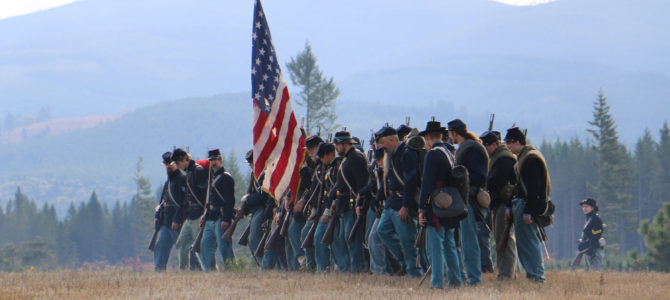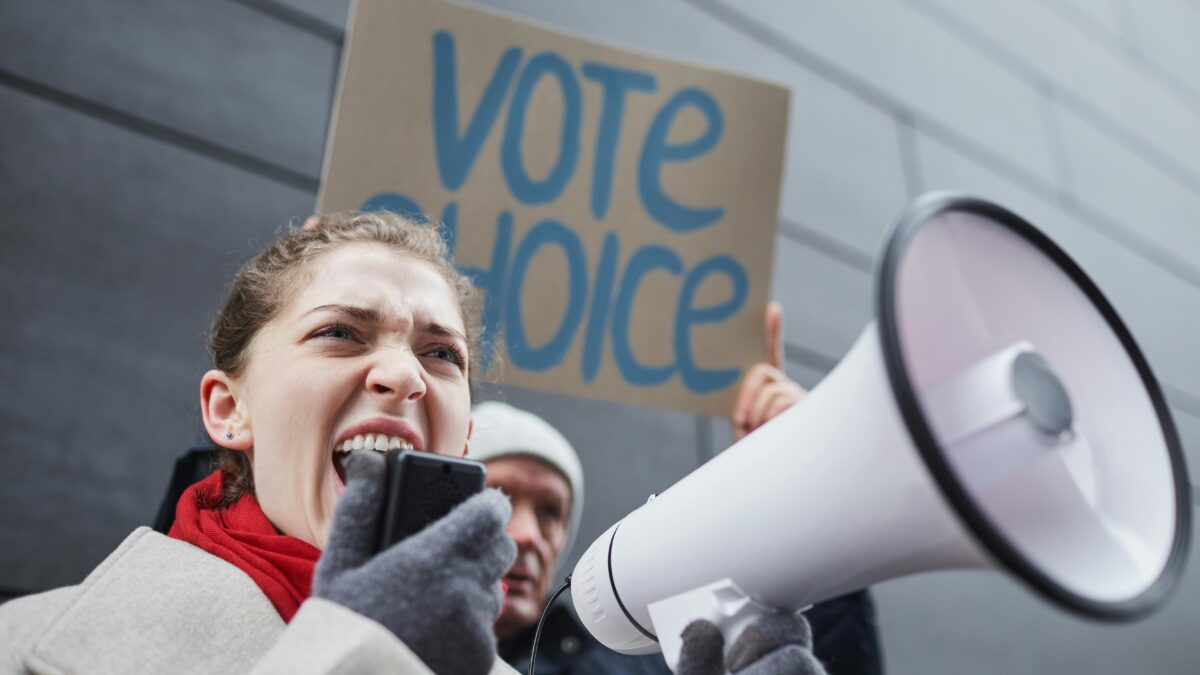
On October 19, 1864, tiny Middletown, Virginia, was filled with the sound and fury of war. Union Gen. Philip Sheridan had been wreaking havoc in the Shenandoah Valley for months, in an effort to devastate the farming region and dry up the South’s supplies. When Jubal Early’s Confederates attacked that morning, the Union recoiled at first, then struck back, finally routing the rebels.
Not only did the decisive Union victory spell the end of Southern resistance in the valley, it also helped propel Abraham Lincoln to victory in the 1864 election. The conflict—which produced more than 8,000 casualties—became known as the Battle of Cedar Creek.
This past weekend, reenactors and spectators gathered at the Cedar Creek battlefield for a two-day reenactment of the battle. It’s a popular annual event at the national park, and this year’s warm, sunny weather looked promising for history-lovers. Around 4:30 p.m. on Saturday, events were suddenly cut short when a “suspicious device”—rumored to be a pipe bomb—was found on site.
Law enforcement quickly evacuated visitors and reenactors from the park, “rendered the device safe,” and thoroughly searched for additional threats. By Saturday evening, organizers had canceled all remaining public events. The event remains under investigation, both by state and federal law enforcement.
The scare wasn’t exactly a surprise. A few weeks ago, the Cedar Creek Battlefield Foundation had received a letter threatening “bodily harm” to those attending the reenactment. After consulting with the FBI and local police, the foundation had decided to move forward with the event, heightening security measures. A notice on their website alerted visitors to the threat, which everyone hoped would prove empty. Sadly, it didn’t.
The bomb scare came on the heels of a tension-filled summer, in which Civil War symbolism was a major flashpoint. Following the deadly protests surrounding a Confederate monument in Charlottesville, Virginia, the city of Manassas cancelled its annual Civil War reenactment in August, citing fears of violence. After this weekend’s events at Cedar Creek, reenactors—and the spectators and communities who love them—increasingly worry that living history will become the next casualty of America’s culture war.
Putting a Human Face on History
Diane Johnson, who lives near Middletown, says she heard about the security threat but decided to attend the reenactment anyway. Her son and daughter wanted to go, and a friend’s daughter was celebrating her birthday at the battlefield.
“Normally, I wouldn’t even worry about something bad happening around here,” she said. “But lately it seems that there have been so many protests about anything related to the Confederacy. So I did wonder—but a reenactment is so different. It’s not a statue or a monument. They’re just telling the story of what happened. And it’s not like they’re rewriting history: the North won!”
Johnson arrived at the park around 3 p.m., just as the day’s battle reenactment was beginning. Once the battle was over, her group decided to walk around the encampment and interact with living historians. When they reached “Sutler Row,” where vendors sell Civil War-era wares, Johnson says they were urgently directed to leave the area. “Someone told us they had found a pipe bomb,” she said. “All the commotion seemed to be centered in the vendors’ tents.” They waited at a distance behind yellow police tape before finally giving up and going home.
Jaoni Wood, also of northern Virginia, was luckier. She and her family arrived early in the day, and her four children thoroughly enjoyed the events leading up to the battle reenactment. “We’ve been studying the Civil War in our home school for the past month,” Wood said, “but I think my kids learned more in those few hours than they did during all our school studies.”
She says her boys especially enjoyed the artillery and infantry demonstrations. Wood was most struck by a reenactor portraying Union surgeon Mary Edwards Walker, an abolitionist who eventually became a Union spy, then a prisoner of war. To this day, Walker is the only woman to ever have received the Congressional Medal of Honor. “I had never heard of her before!” Wood said.
Civil War reenactors say that is exactly why they love their hobby. “Reenacting is a key way to bring the public into the past in an engaging way—a way where they will go home and actually remember it,” Susanna Vaughan told me. She and her husband Peter are hardcore reenactors known as “campaigners.” They travel to many events, portraying either Union or Confederate roles as needed. At Cedar Creek this weekend, Peter was with the 15th Virginia. Susanna joined him in camp, portraying a refugee who had followed her husband to war after the destruction of their home.
“If we had been alive in the 1860s, we would have been Unionists,” Vaughan said, “so when my husband is asked to portray a Confederate soldier, he feels a bit conflicted. But he takes the view that he is there because he was conscripted—as many Southern soldiers were. A lot of those men didn’t have a choice; they were just trying to stay out of jail. So when my husband engages the public as a Confederate, that’s the story he tells.”
Vaughan says the goal is to bring history to life, both for the public and her fellow reenactors: “That’s my motivation: to remember those who fought, and the causes they fought for. To remember the bad causes in order to avoid them. And to remember the good causes so we can remember that good exists, and that it can triumph.”
Chris Anders, who has been a reenactor since 1986, agrees. “Too often when you’re studying history, you just hear numbers: ‘There were 10,000 casualties in this battle.’ Our goal is to humanize it. We illustrate the horror of war. We show what can happen when Americans turn on other Americans. We try to properly portray their sacrifices. These weren’t just names in a book; they were someone’s father, someone’s husband, someone’s brother.”
He points out that many of his close friends in the hobby are quite liberal in their politics. “There is no political agenda whatsoever in the hobby. We never discuss modern politics. We’re trying to show the human impact of war.”
Besides educating the public, Anders points out that reenacting also brings financial benefits to communities, both in tourism dollars and in land preservation. “My company’s events have raised over $600,000 to preserve battlefields. These are historic sites that we’re not asking the government for money to preserve—we’re going out there and raising the money and doing it ourselves.”
The Cost of the Culture War
As the current controversy surrounding monuments spills far beyond its logical boundaries, all these community benefits may suffer. Anders, whose company Rear Rank Productions has organized dozens of Civil War reenactments, says the violence is having a chilling effect on events. “There have already been several events canceled in Virginia, because nobody wants to accept the liability,” he told me. “Renting the property, handling the logistics, getting insurance, getting permits—all of that will get a lot harder. And if this keeps up, they will probably start requiring us to bring in our own security.”
Susanna Vaughan echoed this concern for the future. “I think the next few big events will be a bit troubling until we get through them. My hope is that the hobby will go on—that this is a troublesome time that will pass as media attention moves on to real issues.”
Vaughan said that after she and her fellow reenactors were evacuated from their camp Saturday afternoon, they were finally allowed to return around 10 p.m. She and Peter stayed the night on the battlefield as planned, sleeping under the stars. On Sunday morning, with the day’s public events canceled, the remaining reenactors staged a skirmish anyway: a sign of unity and resistance to fear, in the ironic form of a battle. At the end, both sides came together and shook hands.
The Civil War was a strange and fearsome time, full of many such ironies. It was a time when Americans—friends, brothers, and countrymen—killed each other by the hundreds of thousands, for causes in which they deeply believed. Perhaps this generation, more than any generation since, needs to be reminded exactly what that looks like.
“I found myself getting emotional watching the battle reenactment,” Jaoni Wood told me about her experience at Cedar Creek. “I was thinking about what our country had been through at that point. And it made me sad to think that today we’re going through different—but similar—divisions. It gives me perspective in thinking more deeply about our culture, and my place in it.”
“We have to learn from our history,” Susanna Vaughan agrees. “We have to remember where we came from, and what we’ve grown out of. Growing out of slavery as a country is something that I think we need to remember.”









